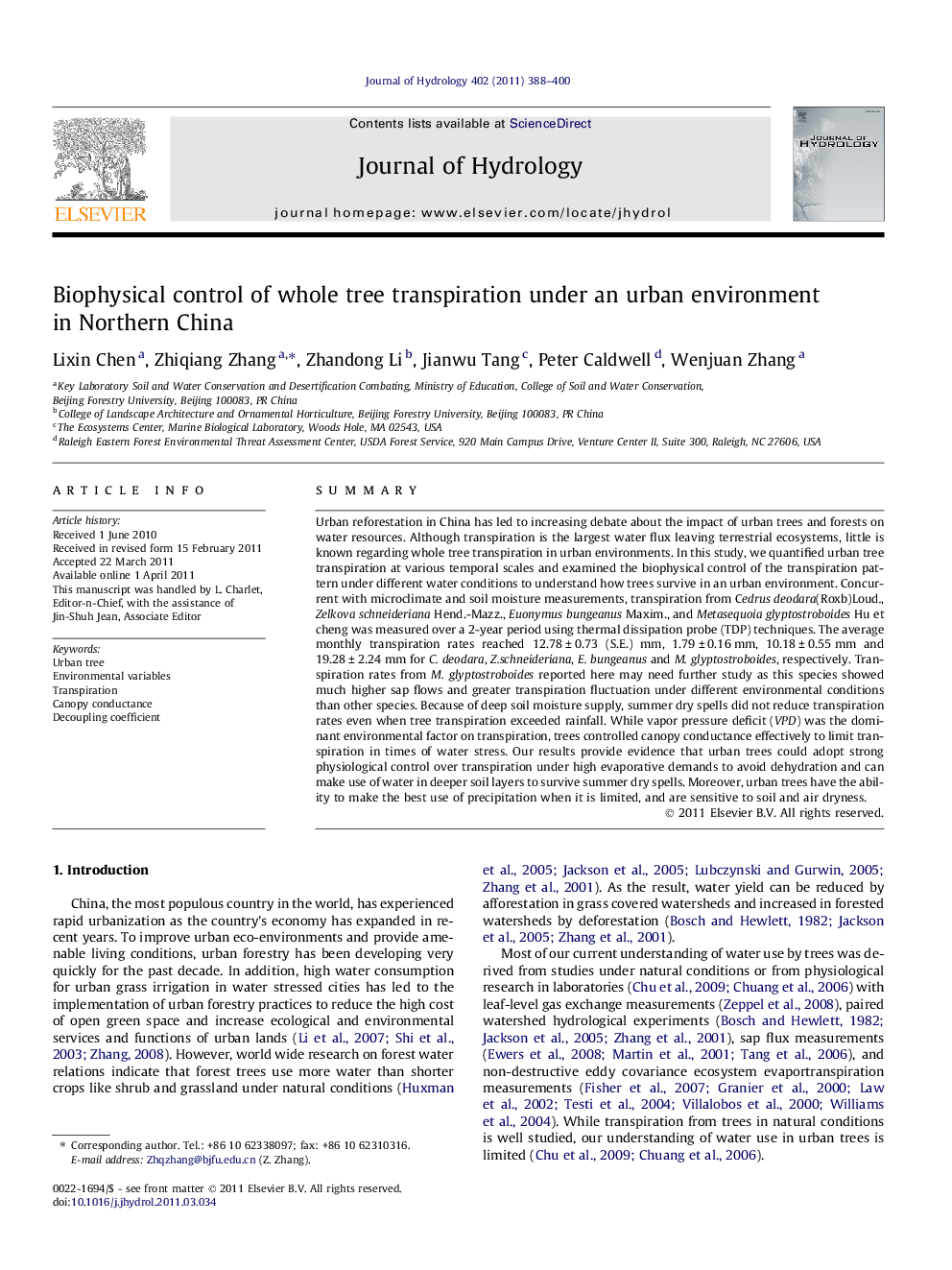| کد مقاله | کد نشریه | سال انتشار | مقاله انگلیسی | نسخه تمام متن |
|---|---|---|---|---|
| 4577538 | 1630023 | 2011 | 13 صفحه PDF | دانلود رایگان |

SummaryUrban reforestation in China has led to increasing debate about the impact of urban trees and forests on water resources. Although transpiration is the largest water flux leaving terrestrial ecosystems, little is known regarding whole tree transpiration in urban environments. In this study, we quantified urban tree transpiration at various temporal scales and examined the biophysical control of the transpiration pattern under different water conditions to understand how trees survive in an urban environment. Concurrent with microclimate and soil moisture measurements, transpiration from Cedrus deodara(Roxb)Loud., Zelkova schneideriana Hend.-Mazz., Euonymus bungeanus Maxim., and Metasequoia glyptostroboides Hu et cheng was measured over a 2-year period using thermal dissipation probe (TDP) techniques. The average monthly transpiration rates reached 12.78 ± 0.73 (S.E.) mm, 1.79 ± 0.16 mm, 10.18 ± 0.55 mm and 19.28 ± 2.24 mm for C. deodara, Z.schneideriana, E. bungeanus and M. glyptostroboides, respectively. Transpiration rates from M. glyptostroboides reported here may need further study as this species showed much higher sap flows and greater transpiration fluctuation under different environmental conditions than other species. Because of deep soil moisture supply, summer dry spells did not reduce transpiration rates even when tree transpiration exceeded rainfall. While vapor pressure deficit (VPD) was the dominant environmental factor on transpiration, trees controlled canopy conductance effectively to limit transpiration in times of water stress. Our results provide evidence that urban trees could adopt strong physiological control over transpiration under high evaporative demands to avoid dehydration and can make use of water in deeper soil layers to survive summer dry spells. Moreover, urban trees have the ability to make the best use of precipitation when it is limited, and are sensitive to soil and air dryness.
► VPD was the major environmental influence on diurnal and nocturnal transpiration.
► Urban trees adopted a stronger stomatal control over transpiration.
► Deep water, time lag and nocturnal water uptake served to survive the water stress.
► Urban trees maintained stable transpiration across years of contrasting rainfalls.
Journal: Journal of Hydrology - Volume 402, Issues 3–4, 25 May 2011, Pages 388–400